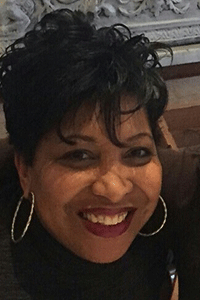The Challenge: Chronic Kidney Disease
It was a day like any other day for Brenda Loving.
“I was at a doctor’s appointment, getting my annual routine blood work,” she says. “I went from not having a care in the world, to suddenly finding out that I needed a kidney transplant.”
Brenda was suffering from chronic kidney disease.
Chronic kidney disease affects more than 26 million Americans. It disables the kidneys’ ability to perform essential body functions. If left untreated, the diagnosis can progress to a severe, irreversible illness.
Like many of those in the early phase of kidney disease, Brenda said she had no symptoms.
“I never felt sick, so I was in complete shock,” she recalls. “It all just happened so fast.”
Upon hearing the news, Brenda said her instant worry was how it might affect her family.
“I have two sons — one who has autism. So, my first thought was, how am I going to take care of him?” she says. “I knew I had to get better.”
To schedule an appointment or ask a question, please call: 833-298-7320
The Path to UPMC's Kidney Transplant Program
Luckily, doctors caught Brenda’s diagnosis early enough. Still, her case was urgent.
Doctors at the UPMC Kidney Transplant Program told Brenda that a living-donor transplant would be the best option. With a growing number of people on the kidney transplant waiting list, living-donor transplant would give her a new kidney sooner.
Through a living-donor kidney transplant, surgeons remove a living person’s healthy kidney and transplant it into a person with a failing kidney.
“I didn’t even really want to tell anyone,” Brenda says. “I was still in a little bit of denial. But, after the initial surprise was over, I revealed my situation to my family.”
Brenda is one of eight siblings. Her remaining four brothers and two sisters are all very close.
Her family also has a history of chronic kidney disease. Two of her brothers suffered from the disease as well.
“My sister, Melita didn’t even bat an eye. She said she was going to get tested to become my potential living donor,” says Brenda. “I was, of course, hesitant because I was worried about her. But she told me, ‘no, we’re going to do this,’ and we went through the necessary evaluations.”
To be a living-donor kidney transplant candidate, you must be between the ages of 18 and 69, and in good general health.
For Brenda’s sister, she needed to lose a defined amount of weight to be a living-donor candidate.
“She was a little afraid she wouldn’t be able to lose the weight she needed to,” says Brenda.
But, after lots of hard work, Melita became healthy enough to become her sister’s kidney donor.
The Solution: Sisters Have a Living-Donor Kidney Transplant
Brenda, Melita, and the UPMC transplant team scheduled the kidney transplant surgery for January 2011.
“The night before I had the surgery, the doctors came into my room and walked me through everything,” she remembers. “It was very comforting. The whole experience was honestly amazing. Even after the transplant, my living-donor coordinator was consistently checking up on me. You could tell that the team truly cared. I had no anxieties or problems whatsoever.
“I was more concerned for my sister,” she continues. “But, I remember her walking out of the hospital a couple days later just like normal. She calls out to me, ‘Okay, see you later!’” laughs Brenda.
The Results: Brenda Gets a New Kidney and a Second Chance at Life
After a successful surgery performed at UPMC Montefiore, the two recovered together at Melita’s home for about three weeks.
Melita was back to work within four weeks, and Brenda returned to her job two months post-kidney transplant surgery.
Brenda and her sister have always been close, but now they share a special bond that has brought them even closer together.
“My sister laughs and says she’s going to take my kidney back. And I laugh back and say ‘no, I don’t think so,'" Brenda says. “We now spend a lot of time together working out and going to the gym, staying healthy.”
Brenda has resumed taking care of her son. “My life is making sure he’s happy,” she says. “We go to the zoo and walk through parks, just having fun. My oldest son helps a lot with him.”
Brenda says since her transplant, she’s had someone come to her who thought about becoming a potential living donor but was timid.
“I told her, once you have your tests completed and approved, you just have to go with your heart,” Brenda says. “A little while later, she told me she was so grateful she had the conversation with me. She ended up becoming a donor as a part of a live donor exchange. She not only saved a loved one but a few others in need of a life-saving kidney transplant.”
A live organ donor exchange is often the solution for those who have incompatible donors.
Brenda says she now sees the world differently after getting a second chance at life.
“I don’t take things for granted or worry about little things as much as I used to,” says Brenda. “When you get a gift like that, things change. No one really understands unless you’ve gone through it. Thanks to my wonderful sister, I now have the opportunity to keep living out each day.”
Brenda's and Melita’s treatment and results may not be representative of all similar cases.
To schedule an appointment or ask a question, please call: 833-298-7320
Learn more about Living-Donor Kidney Transplant
From UPMC Transplant Services:
From the UPMC HealthBeat Blog:
















